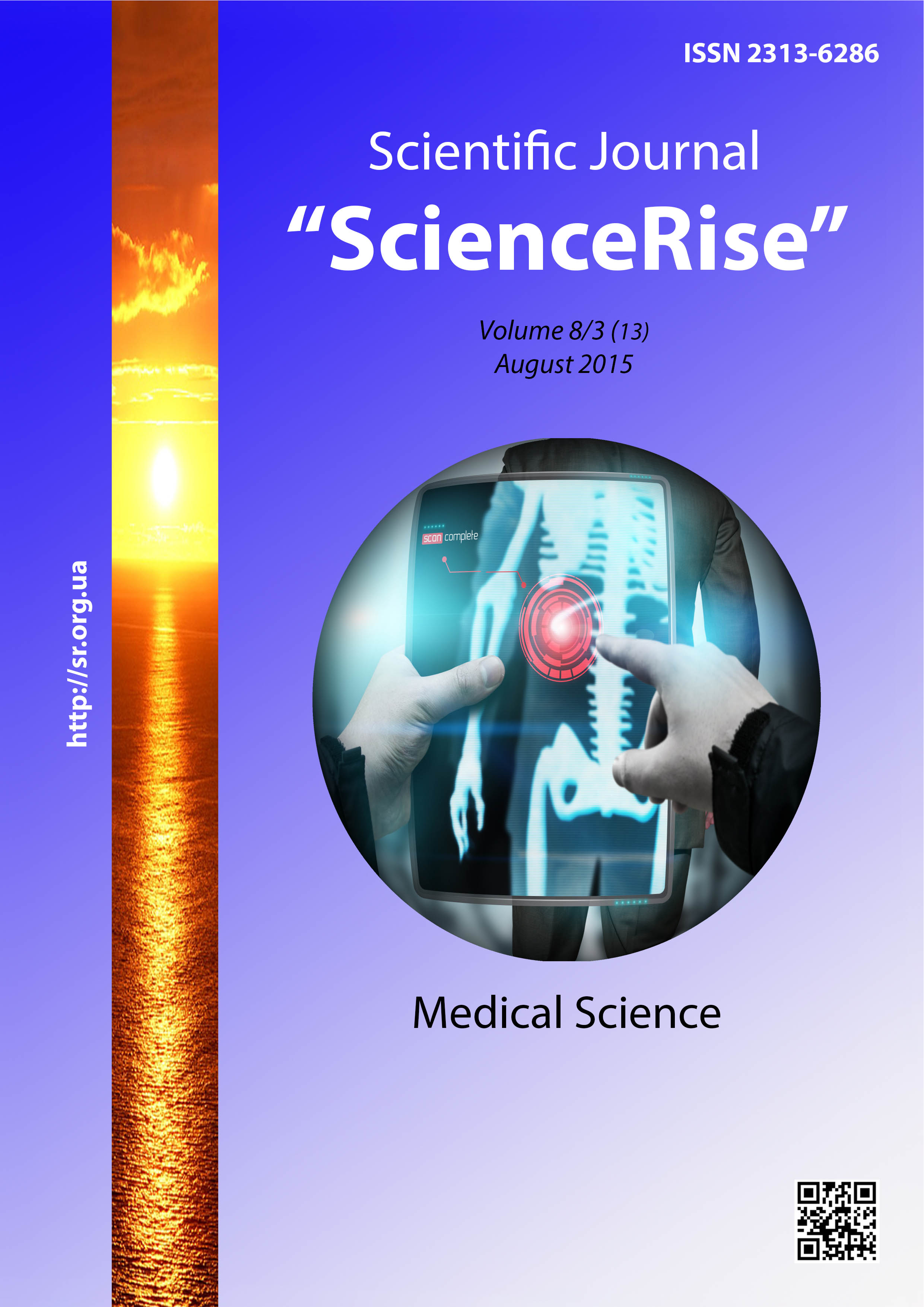The main clinical and psychopathological phenomena of social phobia and features of its subjective evaluation in students
DOI:
https://doi.org/10.15587/2313-8416.2015.48024Keywords:
social phobia, students, clinical and psychological phenomena, anxiety, depression, weight, psycho-social stressAbstract
Aim – to carry out the comparative analysis of features of subjective perception of own psychic state in students depending on presence/absence of the signs of social phobia for detecting the necessity of the further medical and psychological work with this contingent.
Contingent. The 120 1-11year students of Vinnitsa national medical University.
Methods. Clinical and psychopathological, psychodiagnostic ones with the use of M. Lubovits social anxiety scale, C. D. Spilberg-Y.L. Hanin methodology of diagnostic of self-rating, Zunge methodology of differential diagnostics of depressive states and L. Rider psychosocial stress scale.
Results. The main clinic and psychological phenomena of social phobia (SP) in students are: the fear of assessment (critic, blame) of another people in social situations; pronounced constant fear of situations of self-presentation in front of people when the feeling of agitation or humiliation can appear; drive to avoid situations that arouse fear; the high level of pathologic anxiety; the signs of depressive reaction; the high load of psychosocial stress-factors.
Among the variants of distortion of interaction between a person with SP and society the next ones are peculiar for students: deformation of relationship “person – micro social environment” as a main factor of social maladjustment – 13,4 %; deformation of relationship “person – meso social environment” as a main factor of social maladjustment – 37,3 %; deformation of relationships “person – general social sphere” as a main factor of social maladjustment – 49,3 %.
Conclusions. The described features of subjective evaluation of clinical and psychological SP in students were used as a basis at elaboration of complex program of psychocorrection and psychoprophylaxis of social maladjustment in given contingent
References
Khobzey, M. K., Voloshin, P. V., Maruta, N. A. et al. (2012). The state of mental health and prospects of psychiatric care in Ukraine. Bulletin of Ukrainian neuropsychiatrist, 20 (3), 13–18.
Cooper, P. J., Eke, M. (1999). Childhood shyness and maternal social phobia: a community study. The British Journal of Psychiatry, 174 (5), 439–443. doi: 10.1192/bjp.174.5.439
Kozhinа, G. M., Markovа, M. V. (2012). Diagnostics of adaptation in junior students high school. Modern methods of diagnosis, treatment and rehabilitation of mental and somatic disorders of psychogenic origin (XV Platonic reading). Kharkiv, 2, 117–118.
Stukan, L. (2005). Social phobia in the general structure of neurotic disorders in adolescents. Archives of Psychiatry. 11 (1(40)), 84–87.
Schmidt, L., Brook, C. A. (2008). Social anxiety disorder: A review of environmental risk factors. Neuropsychiatric Disease and Treatment, 4 (1), 123–143. doi: 10.2147/ndt.s1799
Davis, M. A. (2012). Literature Review on Counseling Groups for Social Phobia. Graduate Journal of Counseling Psychology, 3 (1), 1–13.
Staugaard, S. R. (2010). Threatening faces and social anxiety: A literature review. Clinical Psychology Review, 30 (6), 669–690. doi: 10.1016/j.cpr.2010.05.001
Mathew, S. J., Ho, S. (2006). Etiology and neurobiology of social anxiety disorder. J Clin Psychiatry. 67 (12), 9–13.
Clark, D. M., Ehlers, A., Hackmann, A., McManus, F., Fennell, M., Grey, N. et. al. (2006). Cognitive therapy versus exposure and applied relaxation in social phobia: A randomized controlled trial. Journal of Consulting and Clinical Psychology, 74 (3), 568–578. doi: 10.1037/0022-006x.74.3.568
Mörtberg, E., Clark, D. M., Sundin, Ö., Åberg Wistedt, A. (2007). Intensive group cognitive treatment and individual cognitive therapy vs. treatment as usual in social phobia: a randomized controlled trial. Acta Psychiatr Scand, 115 (2), 142–154. doi: 10.1111/j.1600-0447.2006.00839.x
Raigorodskii, D. Ya. (2008) Practical psychodiagnostics. Methods and tests. Samara: Publishing Home "Bahr M", 672.
Kornatskyy, V. M., Markovа, M. V., Stepanova, N. M., Babych, V. V. (2007). Evaluation of psychosocial risk factors for cardiovascular diseases in patients of primary health care (guidance). Kyiv, 14.
Downloads
Published
Issue
Section
License
Copyright (c) 2015 Дмитрий Павлович Слободянюк, Наталія Григорівна Пшук, Олександр Вікторович Довгань, Павло Михайлович Слободянюк

This work is licensed under a Creative Commons Attribution 4.0 International License.
Our journal abides by the Creative Commons CC BY copyright rights and permissions for open access journals.
Authors, who are published in this journal, agree to the following conditions:
1. The authors reserve the right to authorship of the work and pass the first publication right of this work to the journal under the terms of a Creative Commons CC BY, which allows others to freely distribute the published research with the obligatory reference to the authors of the original work and the first publication of the work in this journal.
2. The authors have the right to conclude separate supplement agreements that relate to non-exclusive work distribution in the form in which it has been published by the journal (for example, to upload the work to the online storage of the journal or publish it as part of a monograph), provided that the reference to the first publication of the work in this journal is included.

